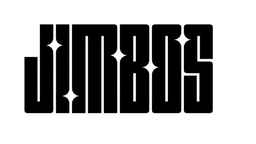What’s the Difference Between a Compound and a Polish?
“Should I compound or polish?” is one of the most common questions we get—and one of the most misunderstood in detailing.
Here’s the clear answer: compounds and polishes both correct paint, but they do it differently—and for different reasons.
What Is a Compound?
Paint compounds are more aggressive abrasives designed to remove deeper defects, oxidation, and scratches. They cut away more of the clear coat to level out imperfections.
When to Use a Compound:
- ❌ Deep swirls or scratches
- ❌ Heavy oxidation or fading
- ❌ Paint that hasn’t been corrected in years
Compounds work fast—but often leave behind a haze or slight marring that needs a polish to refine.
What Is a Polish?
Polishes are less aggressive and focus on refining and enhancing gloss. They may remove very light defects but are mostly about perfecting the finish after compounding—or as a final step before protection.
When to Use a Polish:
- ✅ Light swirl marks
- ✅ Enhancing depth and reflection
- ✅ Prepping paint for ceramic or wax
What About One-Step Products?
One-step polishes combine the cut of a compound with the finish of a polish. They’re pad-dependent, meaning you control how aggressive it is based on the pad you use.
Coming soon: Picture Perfect Polish—our custom-developed one-step that:
- ✔️ Cuts like a compound with a heavy pad
- ✔️ Finishes like a polish with a soft pad
- ✔️ No dust, no mess, no oily haze
Compound vs. Polish vs. One-Step: Quick Comparison
| Feature | Compound | Polish | One-Step |
|---|---|---|---|
| Cutting Power | High | Low | Variable |
| Finishing Ability | Low | High | High |
| Use After Clay? | Yes | Yes | Yes |
| Pad Dependent? | Sometimes | Sometimes | Always |
| Time to Correct | 2+ Steps | Final Step | 1 Step |
Which One Should You Use?
Start with your goals:
- Want swirl removal and perfect gloss in one go? → Use a one-step like Picture Perfect Polish
- Heavy scratches or years of neglect? → Start with a compound, then follow up with polish
- Gloss is good, just want to prep for ceramic? → Use a light polish
Prep Is Always Key
No matter which you choose, always prep first:
- The Super Soaper – pH-neutral wash to lift grime
- Clay mitt or bar – remove embedded contamination
- Everyday Microfiber Towels – Drying and final wipe-down
Related Blog Posts
See our video on compounds vs polish:
Compounds and polishes are tools—not buzzwords. And when you understand what each one does, you can fix your paint faster and get better results.
Whether you go all-in with a multi-step correction—or want a simple one-step solution—you’ll be ready with Picture Perfect Polish.
Until then, prep smart and stock up on the right wash, clay, and towel systems at Jimbo’s Detailing.




